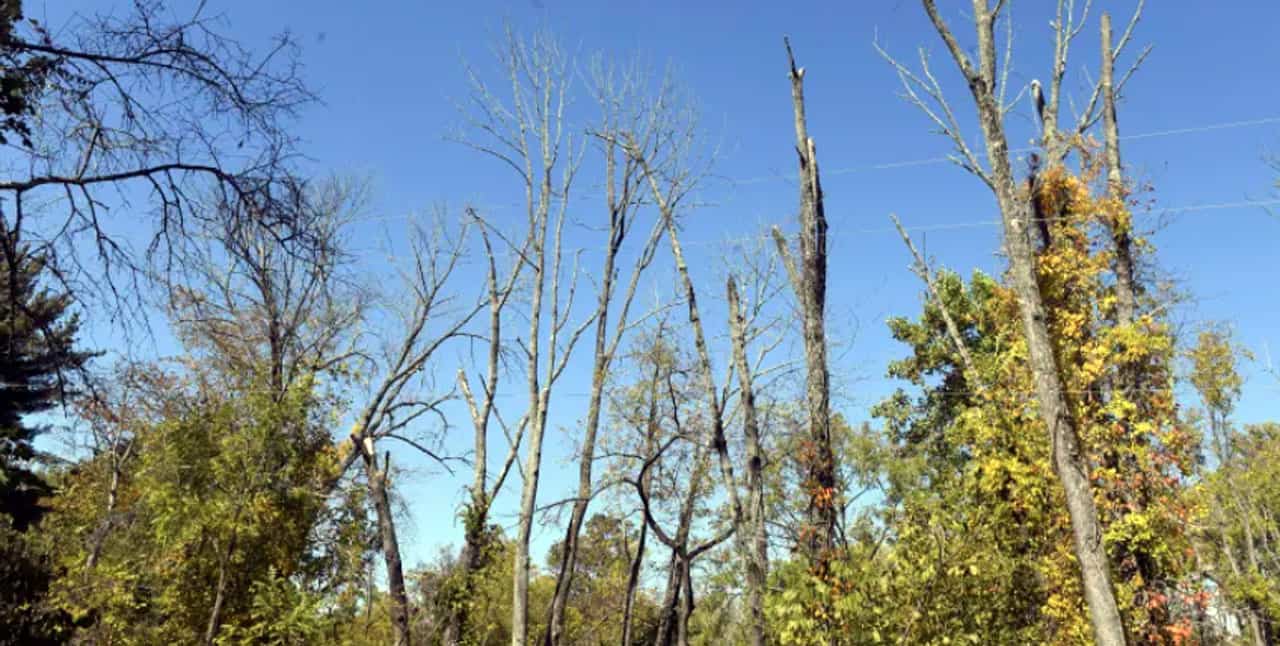Invasive plants and insects pose an expensive threat to Burlington’s trees and forests
Published April 15, 2023 at 4:10 pm

A ripple effect caused by the emerald ash borer beetle has escalated the damage to native plant life in Burlington and it could be an expensive battle to fight.
While the pesky insect is responsible for the destruction of almost 13,000 ash trees in Burlington, it has also allowed invasive plant species such as buckthorn to enter, thrive and squeeze out other native plant life. It’s a problem that has local forestry officials worried not only for the urban forest but also for the potential cost of controlling these wanted guests which could reach into the millions of dollars.
A report circulating at Burlington City Hall points out that European buckthorn, a thick growing shrub introduced from Europe that “out competes” native vegetation, has been creeping in when the dead ash trees are removed creating a dense thicket that prevents the growth of tree and plant species that are natural to the area.
While the emerald ash borer is the initial threat, “the additional impact comes in the loss of biodiversity in the face of new invasive species threats,” the report reads indicating that the addition of other non-native plants could have a catastrophic impact on our natural areas in the years to come.
Other invasive species that pose a threat to the city’s urban forest include sudden oak wilt as well as insects such as the Asian long-horned beetle, spotted lanternfly and the hemlock wooly adelgid.
“These pests and pathogens present significant risks to the long-term health of the urban forest,” the report continues. “Without adequate monitoring to prevent and provide warning, these pests could impact the municipality in much the same way as emerald ash borer. Estimates of their canopy impact could exceed $5 million for each pest.”
Burlington already commits $861,000 annually for tree removal and replacement but an additional $1,7 million is needed over the next two years to deal with the ash borer problem.
Burlington councillors say they are committed to restoring the urban tree canopy and have committed to replacing all of the destroyed ash trees by the end of next year. However, some admit the City has not dedicated enough resources in the past to maintaining the urban forest.
“We have to get more trees into the ground faster,” commented Ward 3 Councillor Rory Nisan during a discussion of the report at a recent planning committee meeting.
Mayor Marianne Meed Ward agreed and pointed out that stopping pests like the emerald ash borer is an expensive endeavour. She added that current conditions show how precious and fragile the urban tree canopy can be.
Burlington forestry officials say an overall management strategy is needed to combat the threat of invasive pests and that ad hoc solutions are not effective in the long term.
“We need a big picture strategy, not a case-by-case fix,” one official said.
A new strategy on how to best manage the urban forest is expected to be introduced later this year.
inhalton's Editorial Standards and Policies advertising





